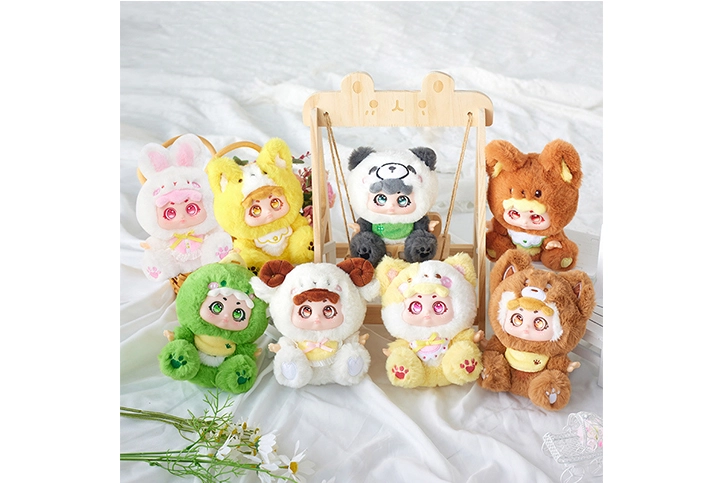Whether you're a seasoned collector or just diving into the world of surprise toys, you’ve probably heard of both blind boxes and gashapon. While they share the thrill of mystery, their origins, formats, and fan experiences are distinct. Let’s unpack the differences:

Anime blind box figures are typically stackable cardboard boxes or sealed bags featuring artwork and series info—but never revealing the specific figure inside. You only know what you get after unboxing.
Gashapon (or "gacha") are capsule toys dispensed via vending machines. The capsule itself often reveals a hint—some are even dispensable in clear or semi-transparent plastic.
Blind Boxes emerged from Japanese "fukubukuro" grab bags and evolved through brands like Pop Mart, Kidrobot, and Sonny Angel.
Gashapon has a richer history—since the 1960s, Bandai’s capsule machines have used coin-operated vending mechanics to dispense small toys.
Blind Boxes often include rare "chase" figures—secret variants that trigger collectors to buy in bulk, trade duplicates, and skim resale platforms.
Gashapon series also have varying rarity, but the randomness is tied to machine stock rather than sealed packaging. Some capsules can be partially transparent, making rarity slightly more manageable.
Blind Boxes are sold in multi-packs or cases, often requiring online or specialty purchases. Surprise and scarcity can drive prices above retail on secondary markets.
Gashapon machines in Japan typically cost ¥100–¥500 (about $1–$5) per capsule. It’s low-stakes, coin-based fun, with duplicate handling via trading or buying full sets.
Blind Boxes emphasize the “process over product” experience—much like a game. The anticipation, unboxing, and reveal offer emotional satisfaction.
Gashapon, while also surprising, are more transactional. Their cultural footprint includes convenience store displays and vending arcade atmosphere .
Blind Boxes: Exploded globally via brands like Pop Mart and Sonny Angel. They're now central to designer toy culture, social media unboxings, and collector communities.
Gashapon: Still prevalent in East Asia; specialty shops also exist abroad. Some machines even accept electronic payments and offer souvenir-localized capsules in airports.
| Feature | Blind Box | Gashapon |
Packaging | Sealed boxes/bags | Capsules from coin-operated machines |
Purchase Format | Multi-packs, online orders | Single-coin vending |
Price per item | $5–$20+ (single), $20–$100+ (cases) | ¥100–¥500 (~$1–$5) |
Rarity Indicators | Secret chase figures in sealed series | Machine stock variations, sometimes visible |
Collecting Strategy | Bulk purchase, blind luck | One-off coins, trading duplicates |
Cultural Context | Designer-toy hype, social unboxing, collectors | Coin-op nostalgia, arcade & convenience settings |
Want a designer art toy experience with exclusive variants and social media buzz? Go for blind boxes—they offer collectible thrill at a global scale.
Prefer small, affordable surprises with on-the-spot gratification? Gashapon machines deliver inexpensive, nostalgic fun.
Both formats share the allure of surprise and collectibility—but they cater to different mindsets:
Blind Boxes thrive on anticipation, set completion, and trading excitement.
Gashapon thrives on instant satisfaction, tactile vending experience, and coin-op nostalgia.
Whether you chase a rare chase figure or savor the spin of a gacha handle, each brings unique joy to collectors worldwide.
 Call Us on:
Call Us on:  Email Us:
Email Us:  Room 1205 12/F Tai Sang Bank Building, 130-132 Des Voeux Road Central, Hong Kong.
Room 1205 12/F Tai Sang Bank Building, 130-132 Des Voeux Road Central, Hong Kong.